sustainability culture ecological networks local plans representation urban policies welfare public policies technology premio tesi di laurea tourism urbanization open position dottorati sprawl progetto urbano adi participation newsletter summer schools innovation anthropology urban africa maps paesaggio
“INDUSTRY NOW”EXPERIENCING CONTEMPORARY INDUSTRIAL CHANGE
Cristiana Mattioli
Industry is changing. This is what you get entering the MAST Foundation and visiting the last exhibit “Industry Now” by Urs Stahel, curator of the MAST photography collection.
Located in a residential neighbourhood of Bologna and built on a former industrial site, the multifunctional complex is a place where industry and the city meet and know each other. The building is the seat of MAST Foundation , a cultural and philanthropic institution focused on art, technology and innovation, and committed to support economic and social growth.
Conceived by Isabella Seràgnoli, President of the industrial Coesia Group, the MAST building improves both company welfare and its public image, providing employees and citizens with high-quality spaces and facilities.
In order to fulfil the complex functional program, architects Claudia Clemente and Francesco Isidori of the studio LABICS designed a unique, fluid, and hybrid space. The building plays the role of a physical interface between the nearby GD factory – an international leading company in the packaging industry – and the urban context, in particular the nearby River Reno park.
The result is a composite building appearing as a compact volume from the outside, yet articulated in pathways and functions on the inside.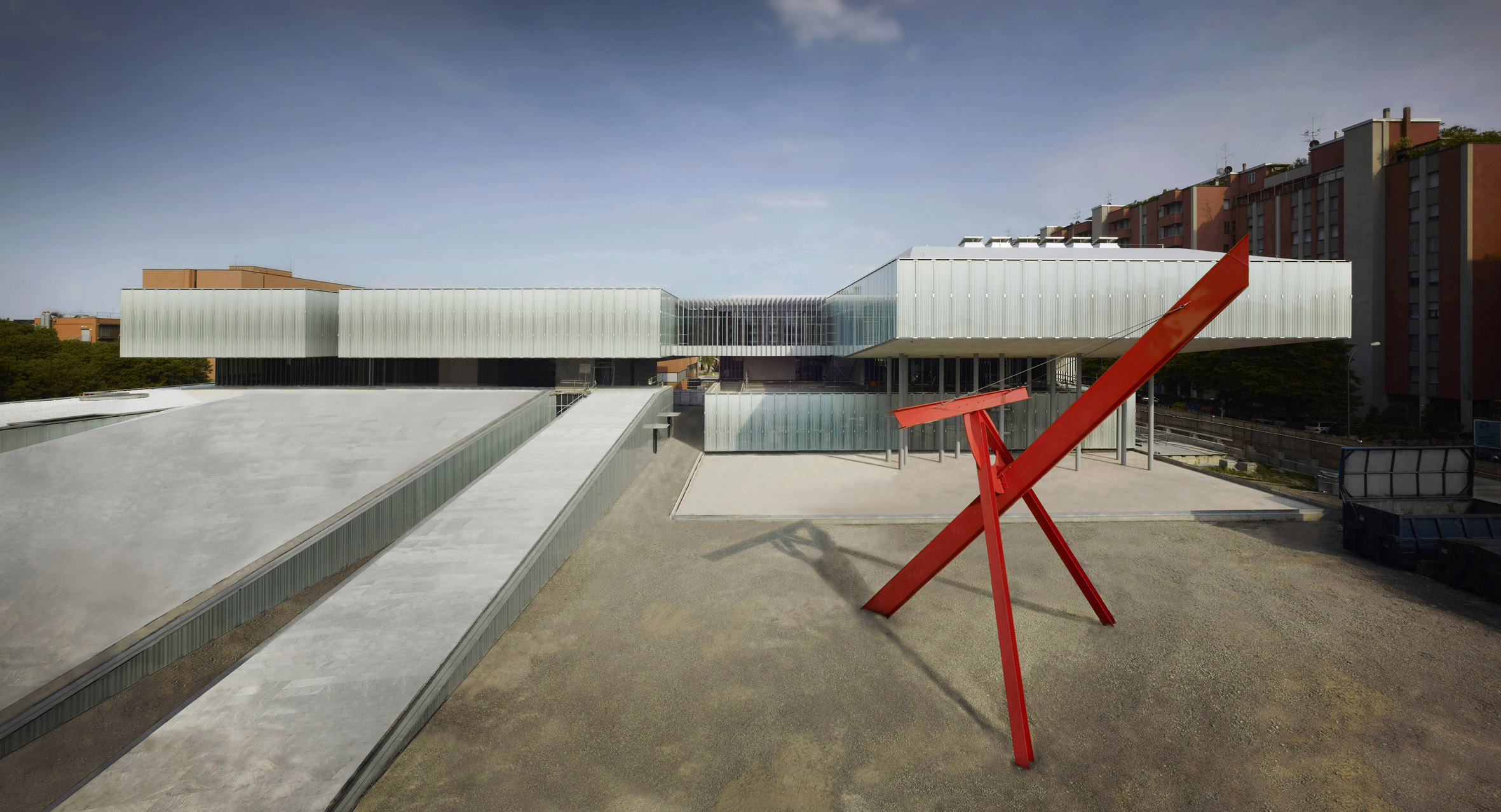
Labics, MAST, Bologna - la facciata con l'opera di Mark Di Suvero
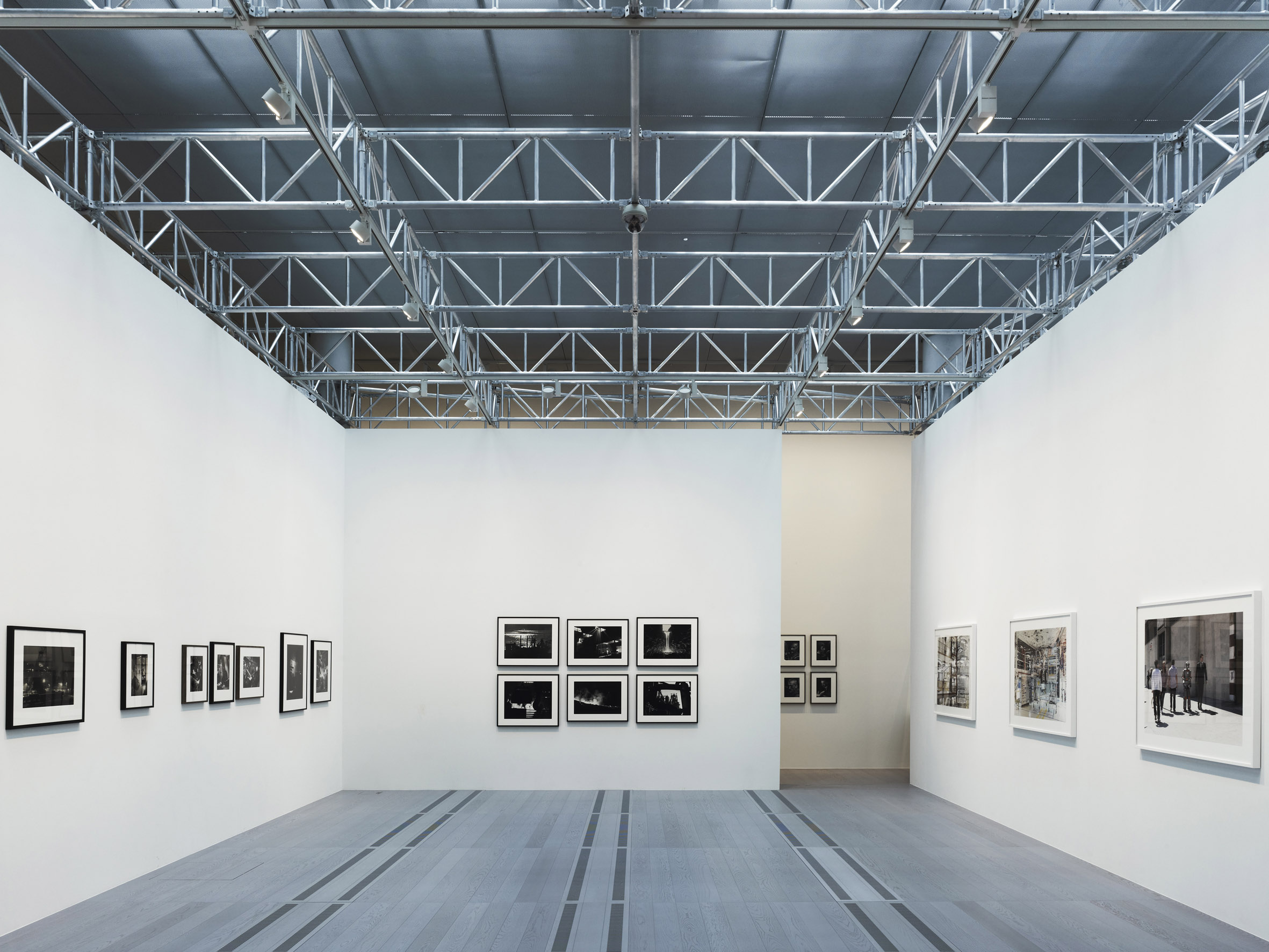
Labics, MAST, Bologna - Gallery Mondi Industria
Two pedestrian long ramps lead the visitors directly to the Gallery, an experimental and educational space where mechanical technology and industrial photography are shown.
The bright foyer introduces the visitors to the auditorium, whose volume is externally supported by some thin columns, ending in a water pool. The hall can accommodate 420 people; its modular acoustics system adapts to different events.
On the same floor, the classrooms of the MAST Academy host company training courses and creative workshops addressed to local schools.
The building includes also some facilities, manly located at the ground level: the company Restaurant and the Wellness centre are part of a unique project that combines healthy nutrition and physical activity. On the northern side, the clearness of the volume is replaced by the colourful façade of the kindergarten, developed with the support of Reggio Children experts.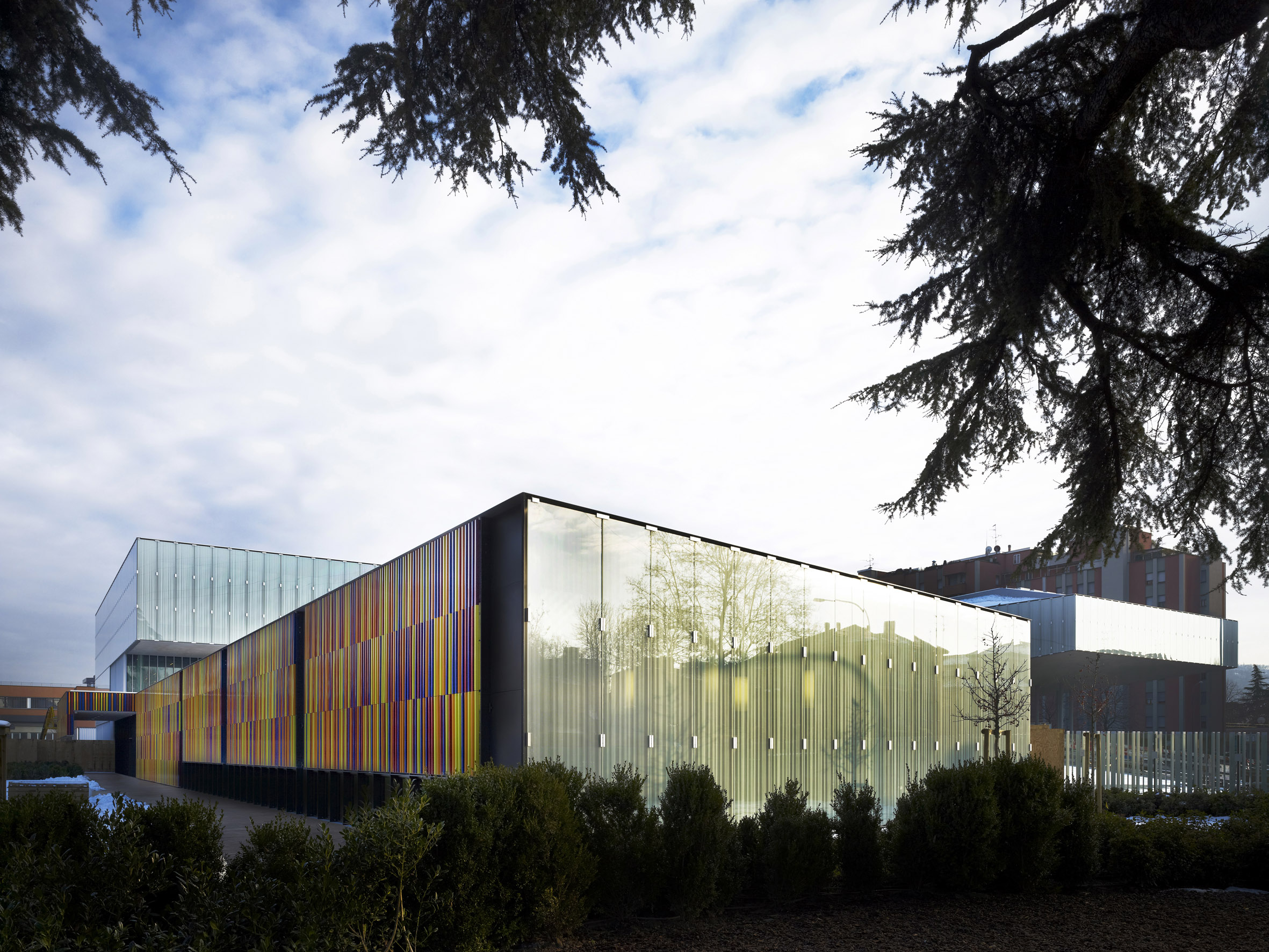
Labics, MAST, Bologna - asilo nido
The MAST Foundation is not only an innovative and creative industrial structure, but also an artistic and cultural institution, which promotes a non-sporadic program of free photographic exhibitions and collateral events, open to the general public.
In the last one, “Industry Now”, the curator Urs Stahel proposes a reflection upon the image of contemporary industry and, more in general, the transformation of the production system. Technological improvement, digitalisation, and relocation of productive plants to low-wage countries, have made industry more and more invisible and far from common people. However, productive processes are continuously evolving, even if through very different ways across the globe. Using different techniques and concentrating on different items, the works of the 24 photographers and artists showcased in the MAST Gallery clearly represent this variety, which can provisionally be recomposed around some main topics:
• The photographs by Peter Fraser and Vincent Fournier, focused on complex machines, metal objects and even robot, underline the increasing combination of production, research, and service economy inside advanced factories. On the same topic, Thomas Struth concerns himself with high-tech research at the Max Planck Institute, depicting the strong relationship between industry and science.
• While dirty, polluting and oily factories have disappeared, leaving aside a huge and heavy heritage, not easy to approach, as the photographs by Vera Lutter, Ariel Caine and Edward Burtynsky show, a new type of industrial space has emerged: the showroom.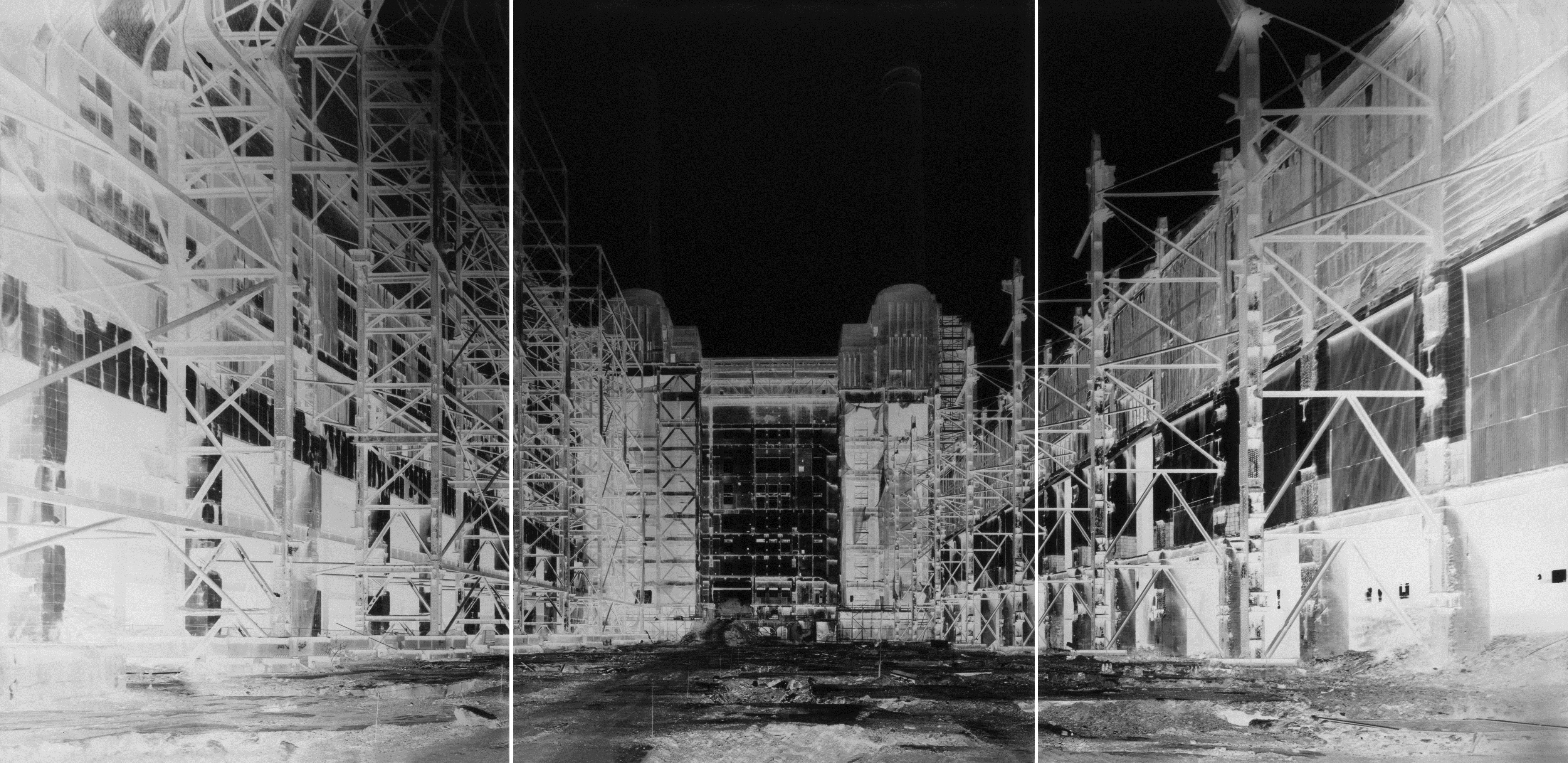
Battersea Power Station, II, July 3, 2004 © Vera Lutter, Courtesy of the artist, New York
The contemporary factory is actually less connected with manufacture as it serves as company exhibition and marketing space. Indeed, it is sufficient to have a look around to discover how much culture has entered industrial space.
Where the production is still on place, however, modern and mechanized plants have replaced men. In the seven-meter-long photography of the Ferrari plant taken by Olivo Barbieri, human absence catches the observer’s attention, preventing him to figure out the real dimensions of these bright white, clean, and cozy workspaces. The emptiness seems to have turned factories into stages or autonomous sculptures of “science and industrial fiction” as in the photographs by Carlo Valsecchi.
Such a kind of transformation is hardly visible from the outside; thus, photographers (and planners) are forced to enter the industrial space to understand how it is changing.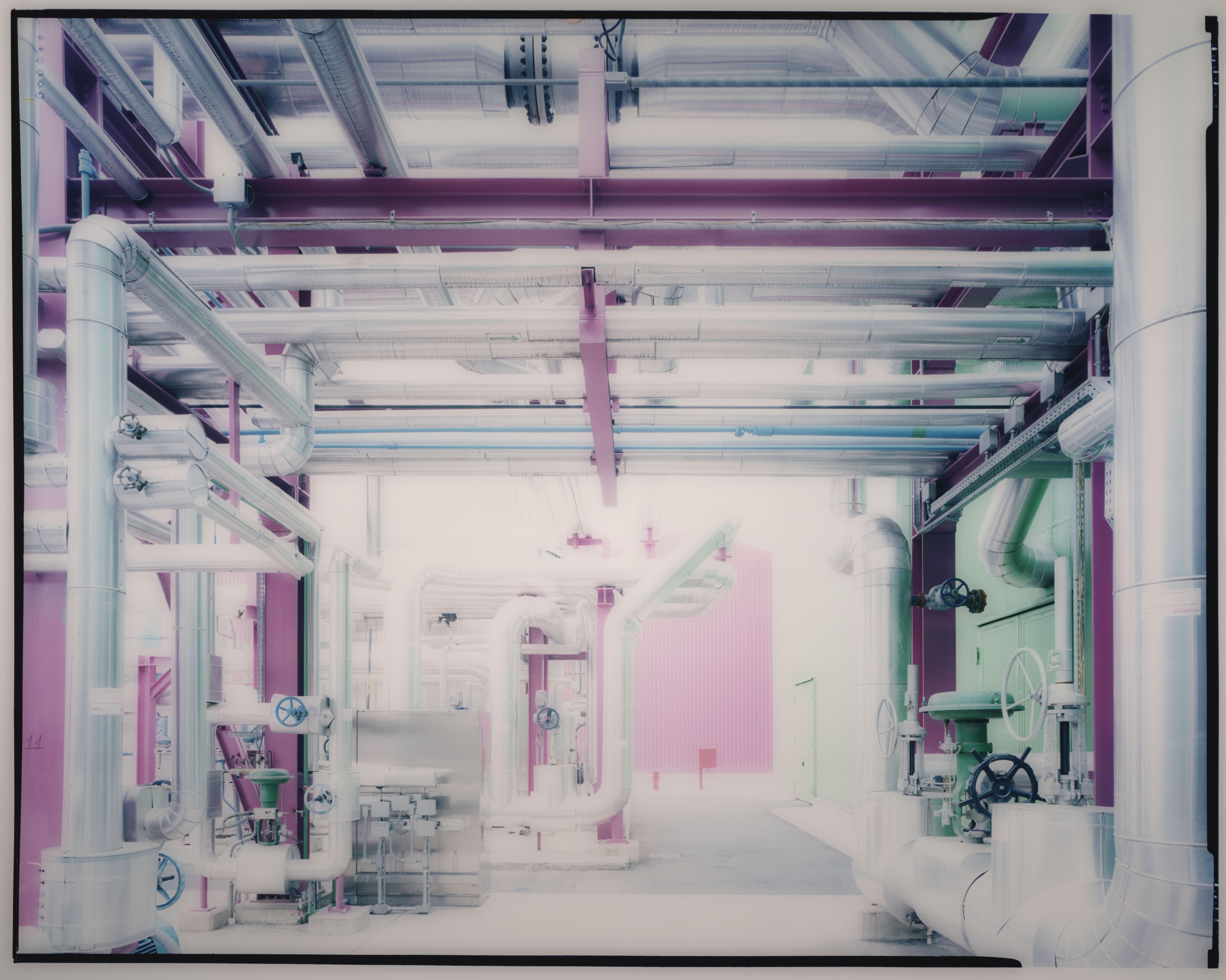
#0078 Dalmine, Bergamo, 2008/2013 © Carlo Valsecchi
• The work of Jacqueline Hassink addresses human absence as well. It is dedicated to “tables of power”, the big companies’ administrative committees, where the few seats are normally occupied by the powerful CEOs and managers depicted by Brian Griffin. Even in post-industrial, high-tech times, social inequalities are the result of the restricted ownership and use of the means of production. The counterpoint of this reflection is represented by the human-centred photographs by Ad Van Denderen, Sebastião Salgado, and Jim Goldberg. Their works remind us that there are still places in the world where work is highly labour-intensive or environmental disruptive. The balance between economic wellbeing and landscape impoverishment is hardly recognizable in the picture of Mitch Epstein and Massimo Vitale., Ukraine, From the series Open See, 2006.jpg)
Vlad #1 (silo boy), Ukraine, from the series Open See, 2006 © Jim Goldberg, Courtesy of the artist and Pace/MacGill Gallery, New York.
, 1999:2013_RIDOTTA.jpg)
Calambrone (#0442), 1999/2013 © Massimo Vitali, Courtesy Brancolini Grimaldi Gallery, London
• Some of the most interesting works are finally connected to transport and logistics, service functions that have been strongly improved after the expansion of international markets. Richard Learoyd depicts English ports and coasts using big scale black and white photographs, while Henrik Spohler represents silent storage landscapes, filled with coloured containers. The maritime global chain is also the subject of the docufilm “The Forgotten Space” (112’) by Allan Sekula and Noël Burch – awarded at the Venice Biennale in 2010 –, a side event that shows the inefficiency of international logistics and is worth a long stay.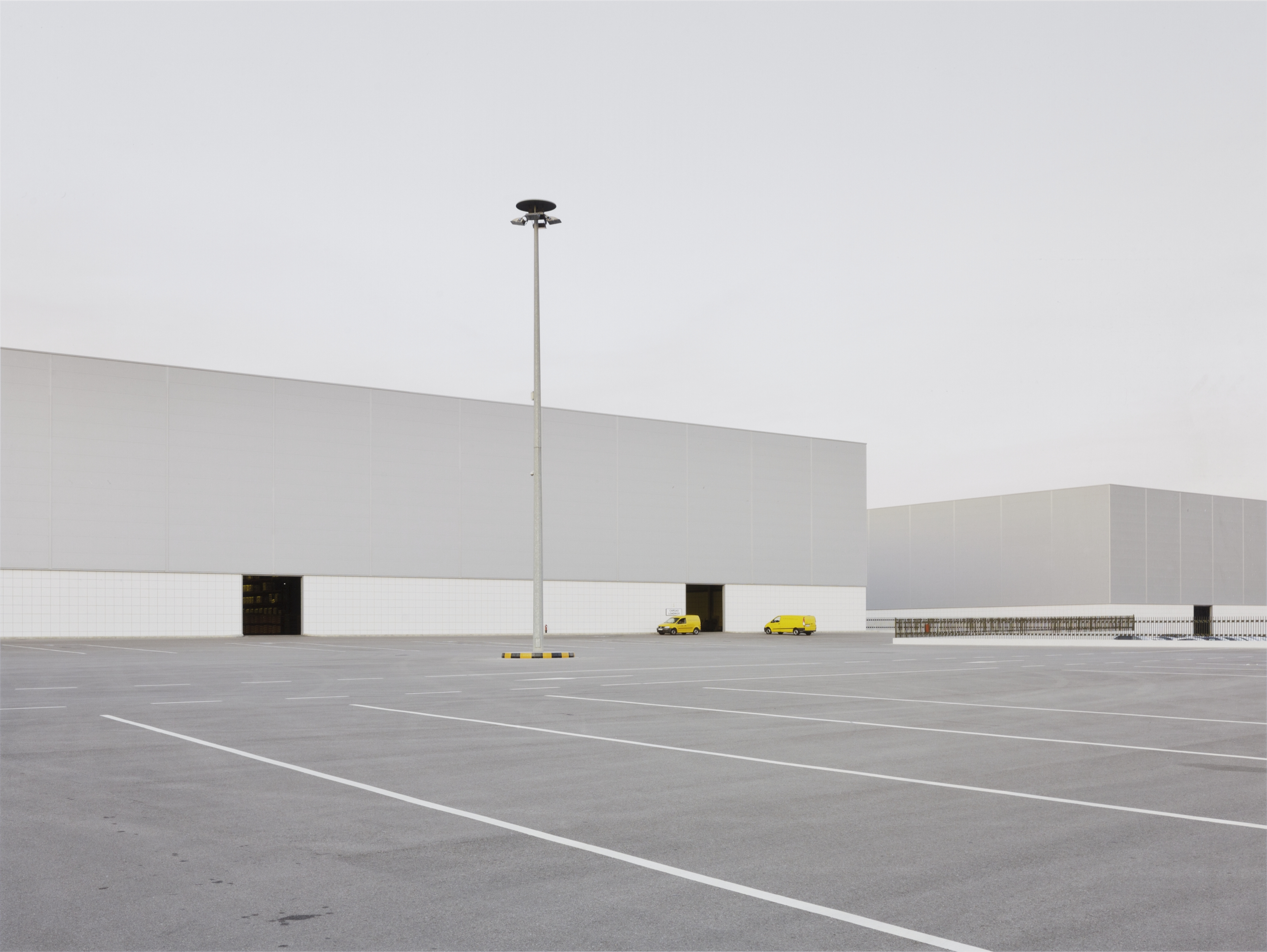
Warehouse, Vila-real, from the series In between, 2015 © Henrik Spohler
Thanks to its rich cultural and welfare offer, the MAST Foundation represents an innovative public space within the city. It goes far beyond what is already known as “Architecture of Made in Italy”, namely the qualification of middle-sized industrial plants, sometimes done by a famous archistar. Indeed, MAST extraordinary experience reveals the potential public role of industry in actively taking part in the landscape and urban qualification and in the improvement of local liveability, for the benefit of both high-skilled company workers and local inhabitants.
INFO
Industry Now – contemporary photographs from the MAST collection
Until 09/06
Tuesday – Sunday | 10 am – 7 pm
Free entrance
Side event (level 0)
“… Stromness…” by Simon Faithfull (12’)
“The Forgotten Space” by Allan Sekula and Noël Burch (112’)
Screenings | Tuesday – Saturday 3 pm – 5 pm
Sunday 11:30 am – 3 pm – 5 pm




Planum
The Journal of Urbanism
ISSN 1723-0993
owned by
Istituto Nazionale di Urbanistica
published by
Planum Association
ISSN 1723-0993 | Registered at Court of Rome 4/12/2001, num. 514/2001
Web site realized by ChannelWeb & Planum Association | Powered by BEdita 3









